'The Year 1968' Puts a Generation on Display
A traveling exhibit looks at a groovy — and tumultuous — year, man
1 of 13

This baseball was signed by players from the 39th All-Star Game, which took place on July 9, 1968, in the Houston Astrodome, making it the first All-Star Game to be played indoors. Among the signers was Willie Mays, who won Most Valuable Player — an award he had also received in 1962. In 1968 the National League defeated the American League 1–0.
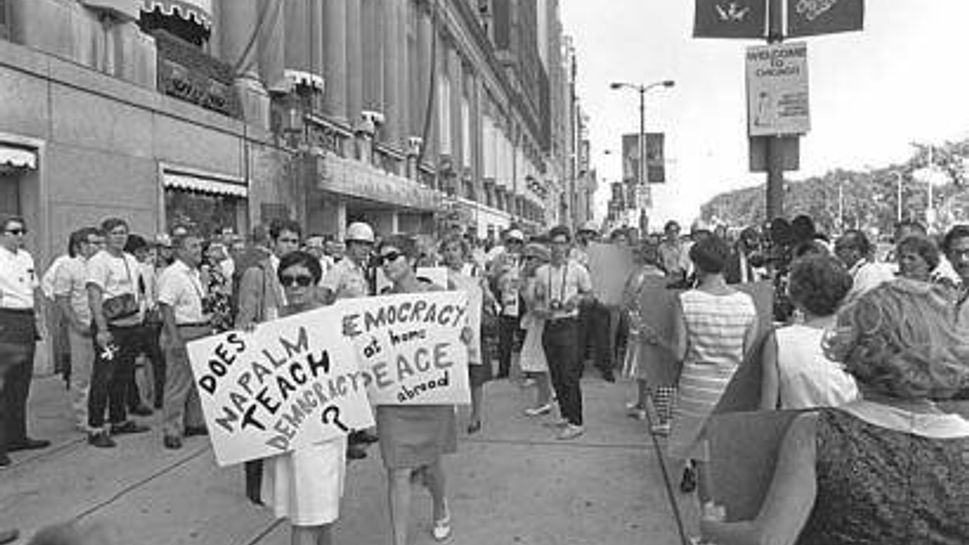
The 1968 Democratic National Convention took place in late August in Chicago. The year's political turbulence and social unrest came to a head inside and outside of the convention center. Mayor Richard Daley ordered the Chicago Police Department and the Illinois National Guard to break up the crowds of protestors in Grant Park. Later declared a police riot, the incident was televised live as the tear-gassed, billy-clubbed crowd chanted, "The whole world is watching."
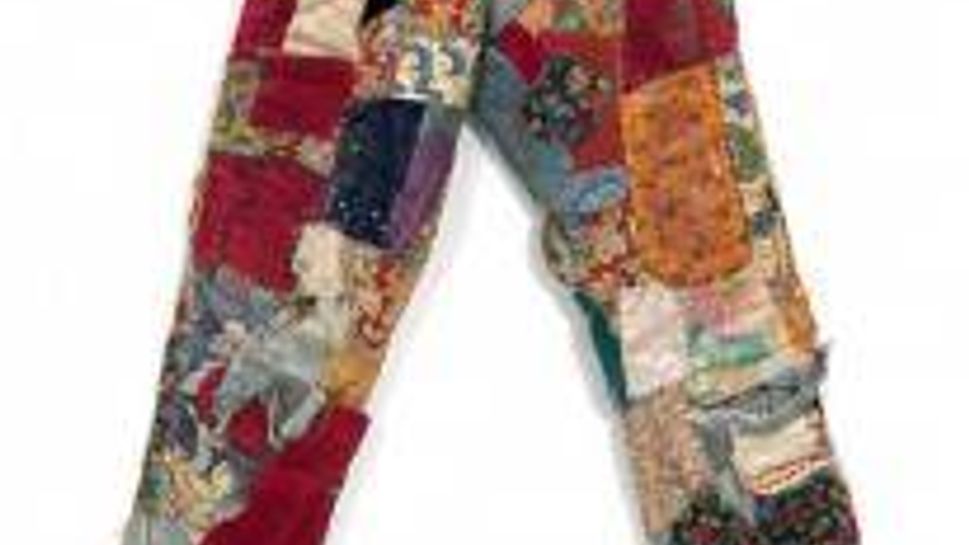
Brightly colored patchwork pants were part of the 1968 fashion scene (bummer that they no longer fit). So what did you wear to the love-in, be-in or happening? Other boss options included a leather-fringed vest, dashiki shirt, granny gown, peace necklace, psychedelic headband, tie-dyed-shirt, wrap skirt, platform shoes and round wire-rim glasses. Who brought the brownies?
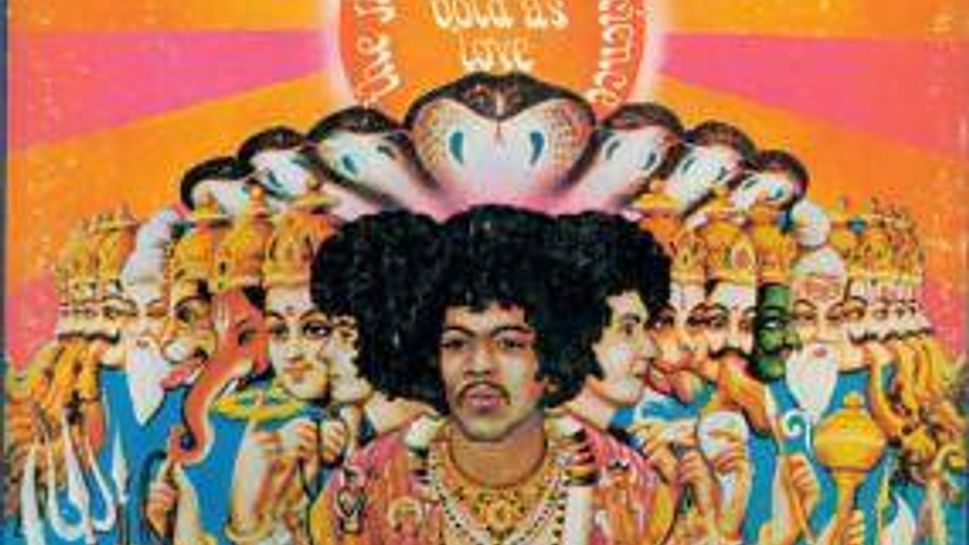
The Jimi Hendrix Experience’s second album, Axis: Bold as Love, was recorded in London and in stereo — at a time when most LPs were mono. Although it was released in England in late 1967, its U.S. debut was delayed until 1968. Hendrix reportedly was disappointed with the album cover art, which depicts him and his band mates as the various forms of Vishnu. He said it would have been more appropriate if the cover had highlighted his American Indian heritage.
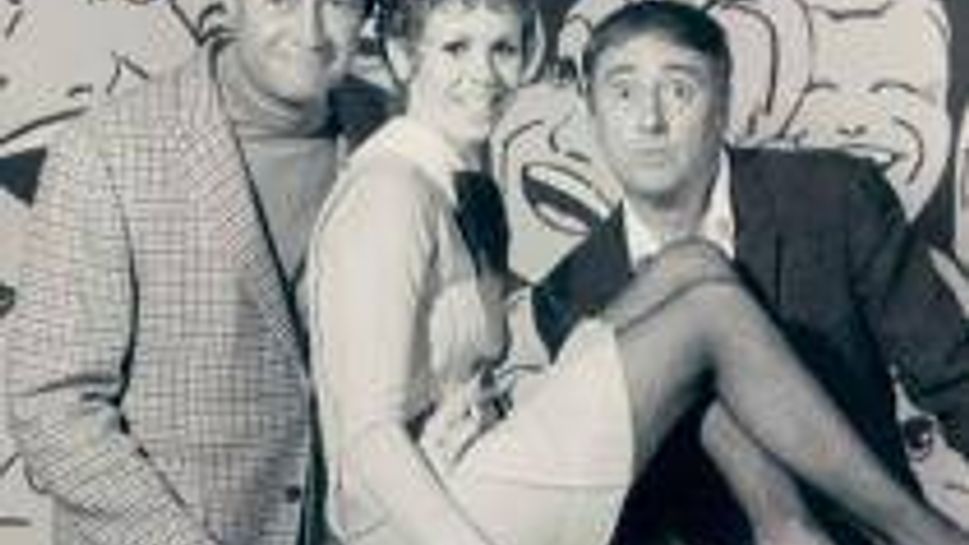
In 1968 Hair opened on Broadway and Rowan & Martin’s Laugh-In debuted on NBC – and both celebrated the counterculture. Pictured here is Laugh-In cast member Judy ("Sock it to me!") Carne with hosts Dan Rowan (left) and Dick Martin. On September 16, 1968, presidential candidate Richard Nixon made an unannounced appearance on the show, popping his head out of a window to ask, "Sock it to me?" The country eventually did.

Throughout history, various groups fighting oppression have used a raised or clenched fist as a symbol of resistance. At the 1968 Olympics in Mexico City, the gesture became universally identified with the American civil rights movement when two U.S. athletes — Tommie Smith, who had won a gold medal in the 200-meter race, and John Carlos, who took bronze in the same event — simultaneously raised their fists in the air while standing on the winner’s podium.
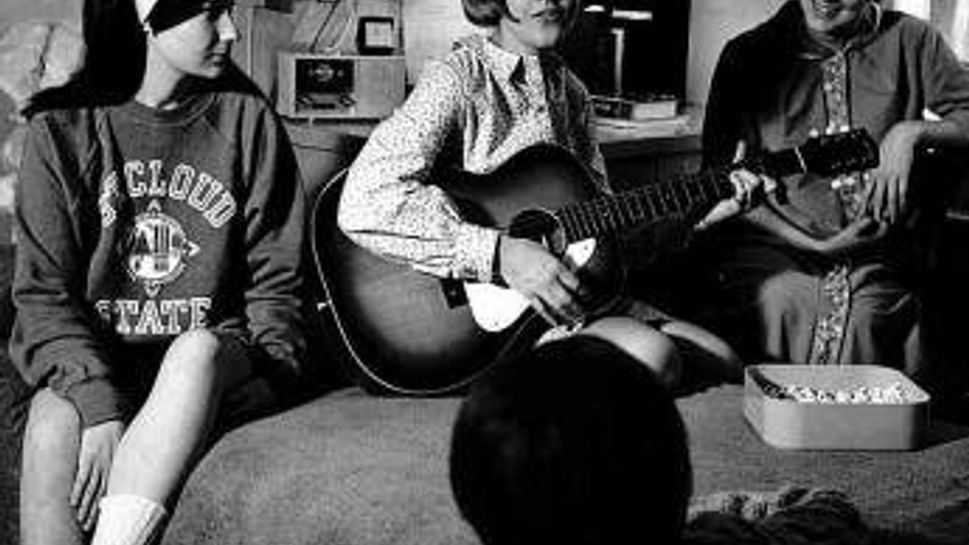
For college kids like these University of St. Cloud, Minn., coeds, hanging out in the dorm, playing the guitar and eating popcorn was where it's at. Top songs of 1968 included such classics as “Hey, Jude” (the year's number one hit, which Sir Paul McCartney just performed at the opening of the London Olympics), “Here’s to You, Mrs. Robinson” and “Young Girl.” The groovy young woman doing the strumming sports one of the angular hairstyles popularized in the late 1960s by Vidal Sassoon.
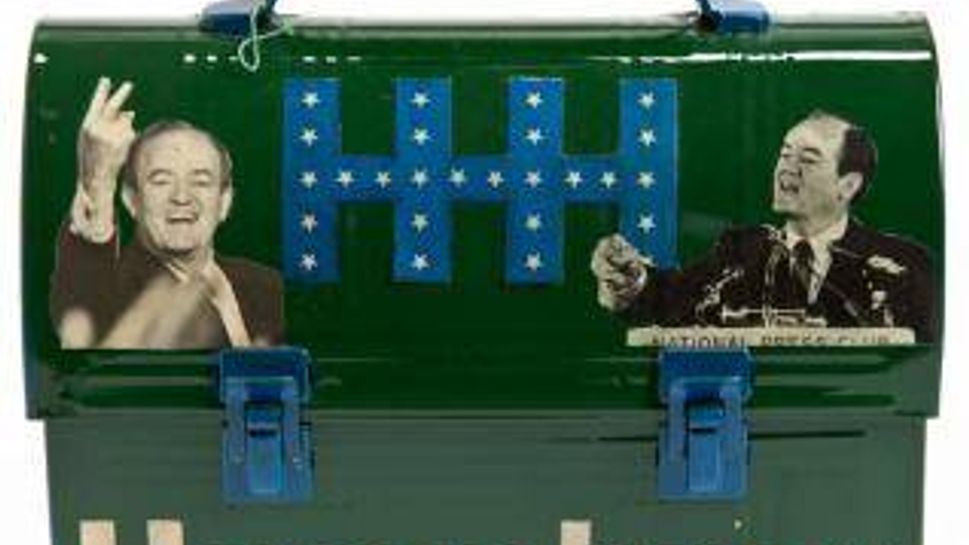
This lunchbox is one of many kinds of memorabilia from the 1968 presidential race. Democratic nominee Hubert Horatio Humphrey (known as HHH) and his running mate, Edward Muskie, lost their bid for the White House to Richard Nixon and Spiro Agnew. Although the popular vote was extremely close, Humphrey won only 191 electoral votes to Nixon’s 301. Before dying of bladder cancer in 1978, Humphrey called Nixon and invited him to his upcoming funeral. Nixon accepted and attended.
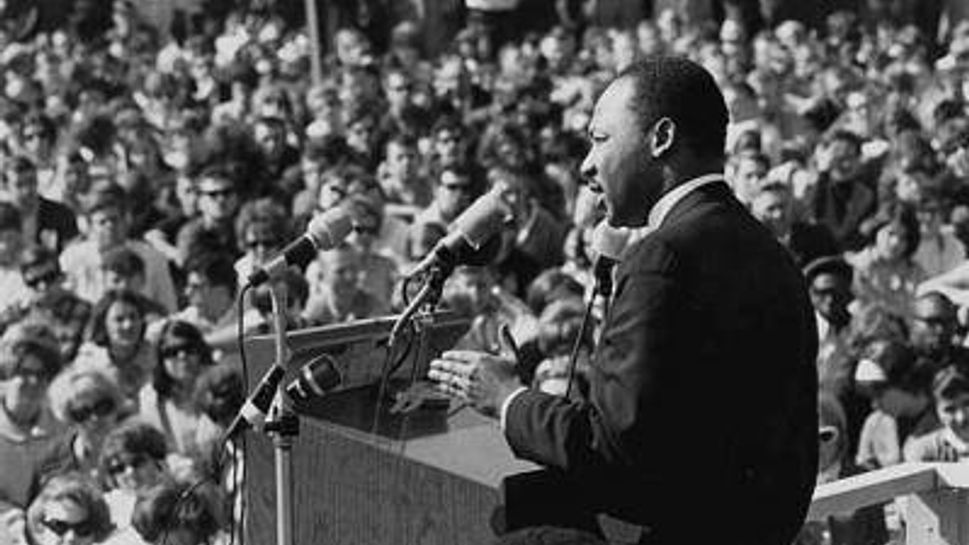
On April 4, 1968, Dr. Martin Luther King Jr. was assassinated at the Lorraine Motel in Memphis at the age of 39. At the time, Robert Kennedy was on the presidential campaign trail, set to address an audience in a predominately black neighborhood of Indianapolis. The speech Kennedy gave to a shocked crowd is said to have prevented the city from erupting in riots. This photo of King was taken at the University of Minnesota’s St. Paul campus in April 1967 as he spoke against the Vietnam War.
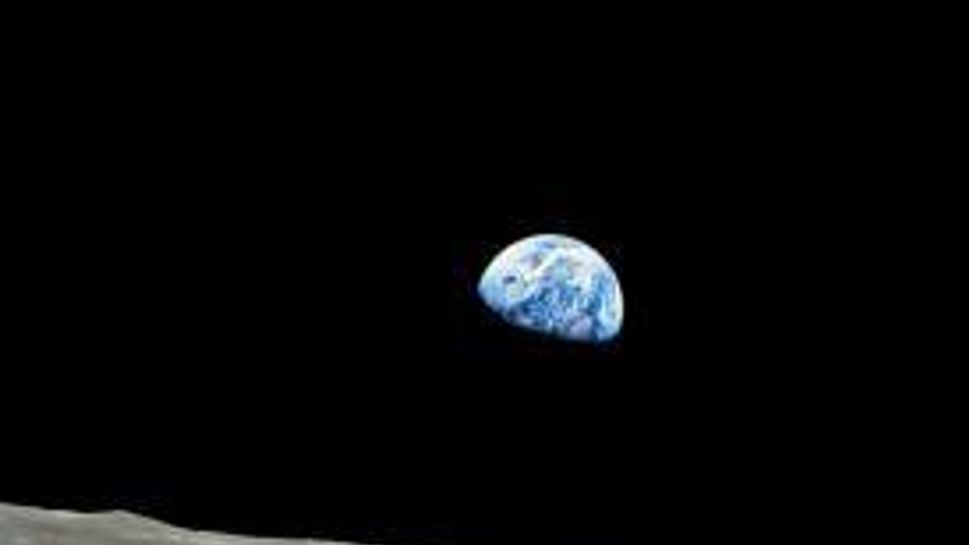
Despite the tumultuous events of 1968, some things remained unchanged — like the solar system. Entitled “Earthrise,” this stunning photo was taken by the Apollo 8 crew on December 29, 1968.
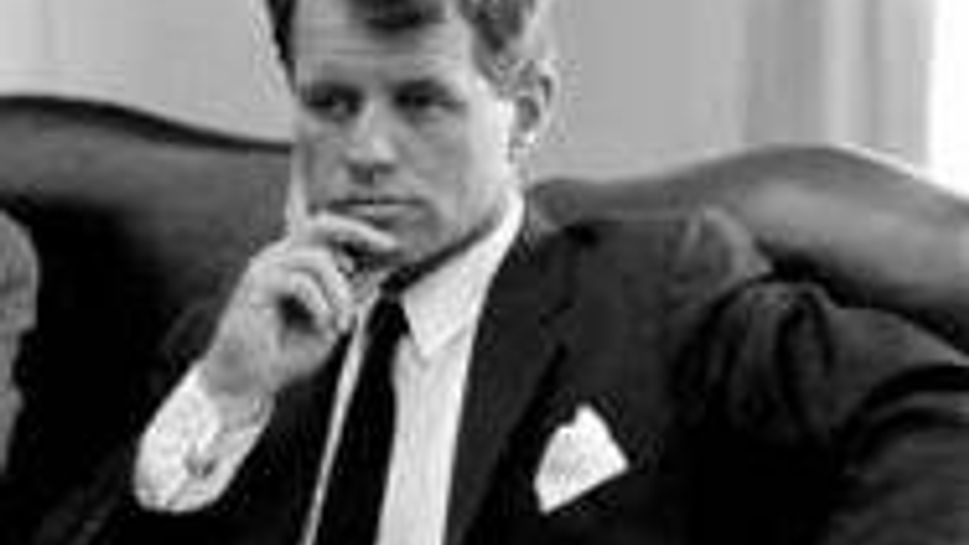
On June 6, 1968, just after midnight, Robert Kennedy was assassinated as he walked through the kitchen of the Ambassador Hotel in Los Angeles — just two months after the murder of Dr. Martin Luther King Jr. The New York senator was on a roll, having just won the California and South Dakota primary elections for the Democratic nomination for president. The following November "Abraham, Martin and John" — sung by Dion in honor of King and Kennedy — reached number four on the record charts.
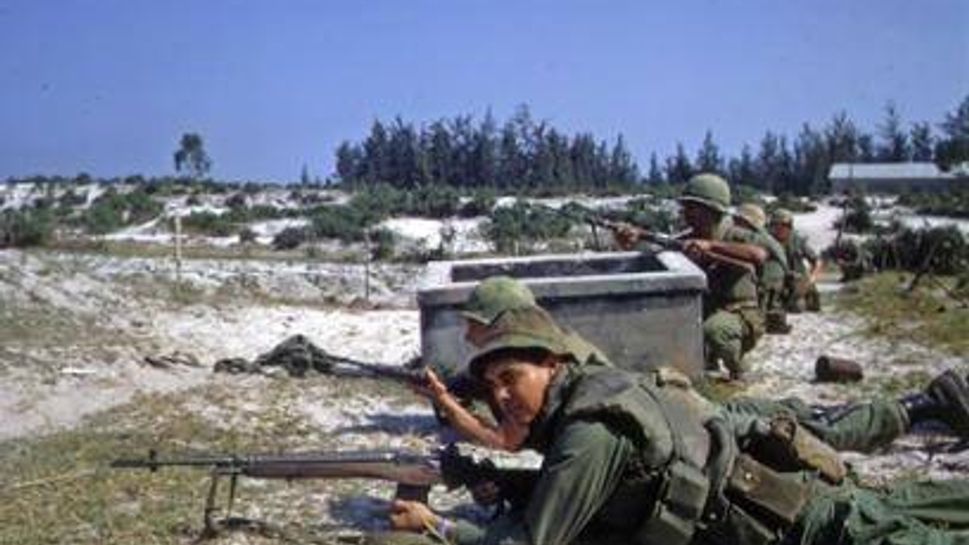
U.S. ground troops had been in Vietnam for three years before the Tet Offensive, which marked a major turning point in the Vietnam War. Despite an agreement to a ceasefire during the seven-day Tet Festivities, which mark the Lunar New Year, the North Vietnamese launched an all-out attack on January 30, 1968, taking U.S. and South Vietnamese armies by surprise. This photo was taken at the Battle of Hamo Village.
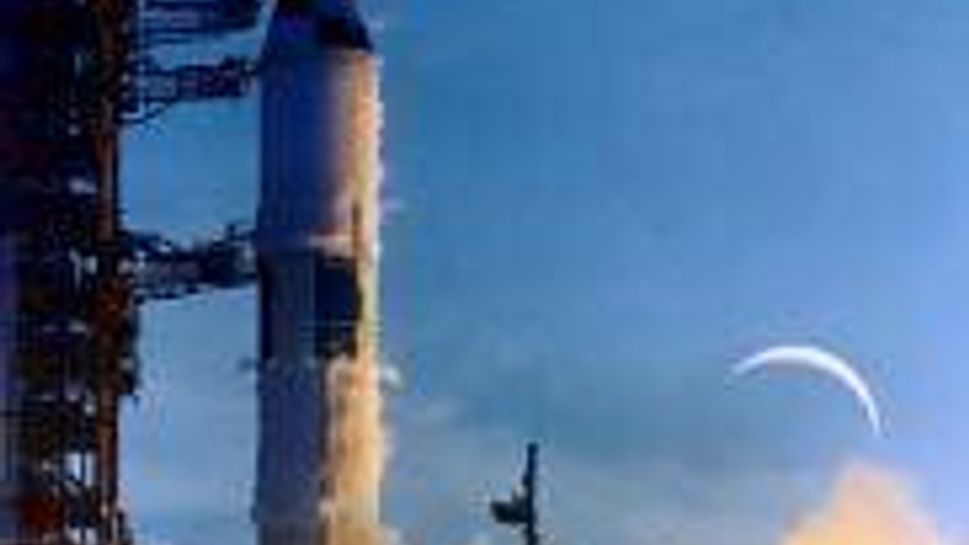
A few days before Christmas 1968, Apollo 8, the second crewed mission in the United States Apollo space program, was launched from the John F. Kennedy Space Center. Apollo 8 became the first manned spacecraft to orbit the moon and return safely to Earth. On Christmas Eve, the three-astronaut crew — commander Frank Borman, command module pilot James Lovell and lunar module pilot William Anders — made a live, onboard TV broadcast in which they read from the Book of Genesis.
What’s the old joke — if you remember the Sixties, you weren’t there?
Well, if that’s the case, you can find out what you missed — or forgot — at “The 1968 Exhibit,” a traveling, state-of-the-art, multi-media show that looks at the turbulent events that took place that extraordinary year. I visited the exhibit, which was organized by the Minnesota History Center, the Chicago History Museum and the Oakland Museum of California, when it was first in St. Paul, Minn., last spring. It takes about an hour to see — any longer, and you'll think you're having a bad flashback.
It’s hard to believe that so much went down in one year, from the assassinations of Dr. Martin Luther King Jr. and Robert Kennedy to the election of Richard Nixon. Then there was the Vietnam War, but I don’t need to remind you of that, or Lyndon Johnson, Laugh-In and the Beatles.
You enter the exhibit via a typical middle-class, mid-century American living room, which is juxtaposed to a Huey U.S. Vietnam helicopter. Contradiction is the theme of the show as 1968 marked the point at which the first wave of boomers came of age and the Viet Nam War reached its peak. If you think we’re a divided country now, just look at the display cases: Our top movies then? Bonnie and Clyde and The Green Berets. Our favorite movie stars? Jane Fonda and John Wayne. As for singers, Janis Joplin meet Perry Como.
On the Sunday afternoon that I saw the exhibit, it was jam-packed — and not just with aging boomers but with people of all ages. A lot of today's college kids were there (and I'm not giving names, but I saw some of you rolling your eyes at the photos of our generation in tie-dyed shirts and psychedelic headbands).
If you really want to impress your kids or grandkids (while testing your long-term memory), you should play the interactive trivia game at the end of the exhibit. Watching others try to answer questions about 1968, I couldn't help blurting out the correct answers, like "Bob Eubanks!" and "The Cream!”
Hey, maybe I was there after all.
Slideshow and Touring Schedule
Here then is a slideshow of assorted images from the exhibit. If you'd like to see it in person, it's at the Oakland Museum in Oakland, Calif., through November 25; the Heinz History Center in Pittsburgh from Feb. 1, 2013, to April 28, 2013; the National Constitution Center in Philadelphia from June 7, 2013, to September 2, 2013, and the Missouri History Museum in St. Louis from Oct. 5, 2013, to January 5, 2014.
Peace.

